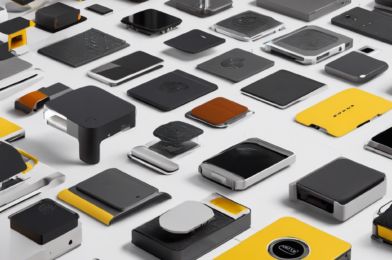The tech world is witnessing an unexpected trend: retro tech, once considered outdated, is making a surprising comeback. From vintage record players to iconic game consoles, yesteryear’s gadgets are captivating a new generation of consumers and collectors alike. But why are we seeing this resurgence, and what’s fueling this renewed interest in technology from bygone eras?
There’s a certain allure to vintage technology, a charm that modern devices often lack. Retro gadgets evoke a sense of nostalgia, transporting us back to simpler times when technology was less complex. The tactile experience of flipping through vinyl records or the satisfying click of a mechanical keyboard can provide a welcome break from today’s touchscreens and wireless connections. This shift in preferences highlights a desire for more tangible and sensory-rich experiences.
One factor driving this trend is the unique design aesthetics of retro tech. The sleek, minimalist designs of modern electronics are undoubtedly appealing, but there’s something special about the bold colors and distinctive shapes of vintage gadgets. From the iconic curves of vintage radios to the vibrant graphics on classic video game cartridges, these designs are now sought-after collector’s items and stylish home décor pieces.
Retro gaming has also experienced a renaissance. Classic consoles like the Nintendo Entertainment System and Sega Genesis have been re-released, offering gamers the chance to relive their childhood gaming memories or discover retro gaming for the first time. This surge in popularity has led to thriving communities of retro gaming enthusiasts and the creation of modern games with retro-inspired graphics and gameplay.
Moreover, the rise of the maker movement and DIY culture has played a significant role in this resurgence. Enthusiasts are restoring, modifying, and even creating their own retro devices, fostering a sense of community and creativity. Online forums and social media groups dedicated to retro tech have become hubs for sharing knowledge, tips, and the joy of bringing old gadgets back to life.
This retro tech trend also taps into the growing consciousness about sustainability and consumerism. By repairing and reusing old technology, consumers can extend the lifespan of devices and reduce electronic waste. This shift towards embracing vintage tech demonstrates a more mindful approach to consumption.
In an era of rapid technological advancement, the resurgence of retro tech serves as a delightful reminder of the enduring appeal of vintage design, hands-on experiences, and the power of nostalgia. As we embrace the future, there’s a growing appreciation for the past, ensuring that these retro gadgets continue to find new life in homes and hearts worldwide.
For those interested in exploring this trend, there are numerous online platforms and marketplaces dedicated to retro tech, offering everything from vintage audio equipment to classic gaming consoles. So, whether you’re a collector, a design enthusiast, or simply nostalgic for the good old days, retro tech has something to offer and provides a unique and exciting journey into the past.









